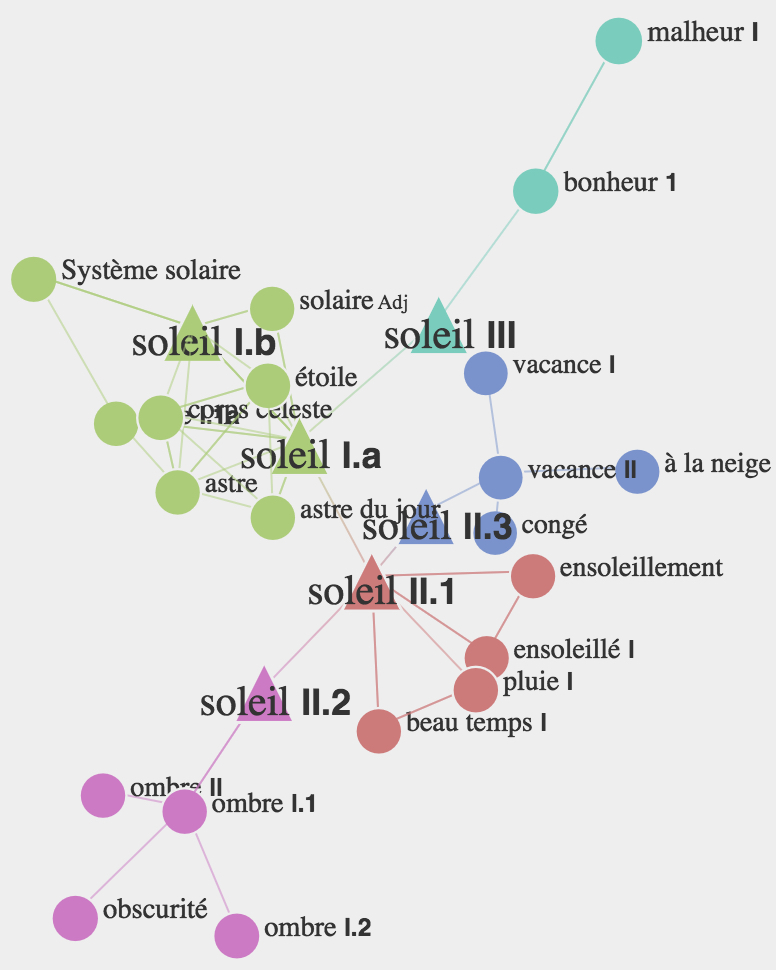Lexical Systems are network models of natural language lexicons. Contrary to traditional textual dictionary-type models, Lexical Systems structure lexical information in an essentially relational fashion: each lexical unit is characterized, before all, by the set of paradigmatic and syntagmatic links that connect it to other lexical units of the language. The relational framework of each Lexical System relies on Meaning-Text theory’s lexical functions:
- paradigmatic lexical functions, that connect the lexical unit to its semantic derivatives – Syn (synonyms), Anti (antonyms), Gener (generic terms), S0/V0/A0/Adv0 (nominalizations, verbalizations, adjectivizations, adverbializatiosn), Si (typical actant names), etc.;
- syntagmatic lexical functions, that connect the lexical unit to its collocates within collocations of which it is the base – Magn (intensifiers), Operi/Funci/Laborij (support verbs), Reali/Facti/Labrealij (realization verbs), etc.
From a formal point of view, a Lexical System is a graph of lexical units of the small world family (Watts & Strogatz 1998), whose structure is analogous to that of a “social network of lexical units.” It is therefore radically distinct from taxonomic models, where the lexicon is primarily organized as a hierarchy of lexical unit classes. Polguère (2009) introduces an initial theorization of the notion of Lexical System; Polguère (2014) presents the lexicography of Lexical Systems that is based on insights gained when working, mainly, on the French Lexical Network (fr-LN).
It is therefore radically distinct from taxonomic models, where the lexicon is primarily organized as a hierarchy of lexical unit classes. Polguère (2009) introduces an initial theorization of the notion of Lexical System; Polguère (2014) presents the lexicography of Lexical Systems that is based on insights gained when working, mainly, on the French Lexical Network (fr-LN).
- Polguère A. (2014) From Writing Dictionaries to Weaving Lexical Networks. International Journal of Lexicography 27(4), pp. 396–418.
- Polguère A. (2009) Lexical systems: graph models of natural language lexicons, Language Resources and Evaluation 43(1), pp. 41–55.
- Watts D. J., Strogatz S. H. (1998) Collective dynamics of ‘small-world’ networks. Nature 393, pp. 440–442.
